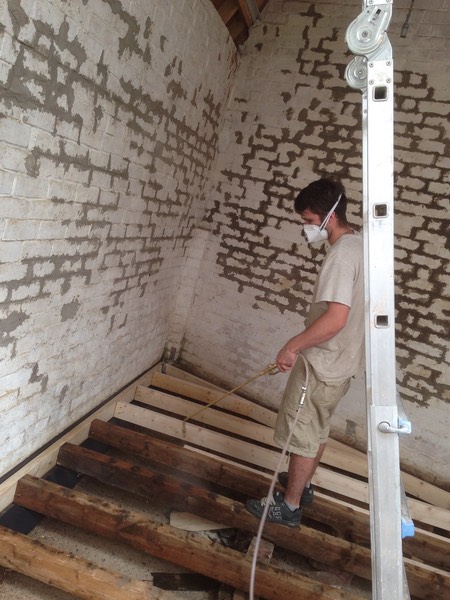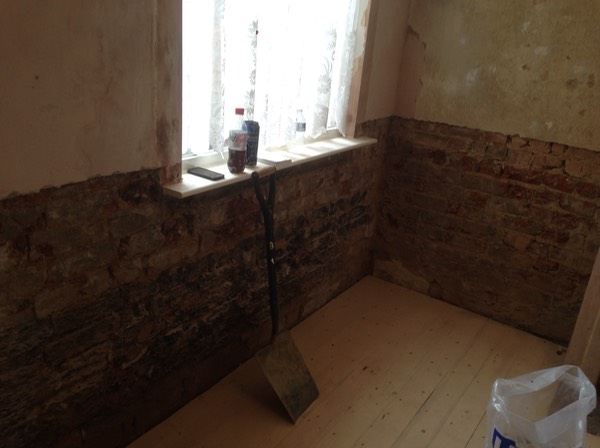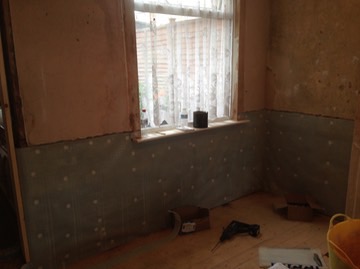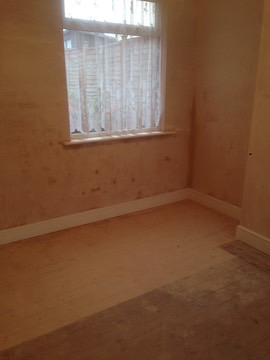Dampness in Buildings
L Hathaway Carpentry limited provides a full consultancy on damp and damp related problems in buildings. If your home has damp issues we can survey your property to find the cause of the damp this usually takes up to a day. Be aware of companies that do free surveys and within 15 minutes have diagnosed its cause and quoted to repair with chemical DPC or tanking methods
Rising Damp
Rising damp is often misdiagnosed and is actually quite uncommon. Building defects leading to bridging of damp proof courses are the most likely cause. Condensation, penetrating damp and historical damp are often mistaken for rising damp. The commonest reasons for misdiagnosis is inexperience, misuse of moisture meters and a vested interest in its positive diagnosis. Common treatments vary, but usually a chemically injected damp proof course is installed, backed up with a waterproof internal render/plaster mix. This is generally not effective, and expensive especially if not needed.
L Hathaway Carpentry limited will correctly diagnose the causes of damp using a variety of moisture monitoring and sampling techniques and will rely on sound building practice to manage the problem. Generally this would involve the reduction of ground levels below existing damp proof course level. The repair of external defects and possible re-
plastering on the interiors if salt damaged plaster is present.
A physical damp proof course may be recommended under some circumstances. This is very reliable and cost effective.
Timber treatments
Fungal Timber Decay
Dry rot (Serpula lacrymans) and wet rot (Coniophora puteana etc.) are the most common form of decay in buildings in the United Kingdom. Most rot require high moisture levels in order to thrive and propagate. Rots break down timber elements in buildings, particularly in areas where there is poor ventilation and high humidity. The chemical constituents forming the timber are broken down by the metabolism of the fungi reducing the strength of the timber until it is structurally compromised; for instance, floor joists may be decayed to the point of collapse.
Reliance is often placed on the use of toxic chemicals to eradicate the fungi.
This is in most circumstances, unnecessary.
The solution
Moisture is essential for fungi to thrive in buildings. This can be controlled and is the basis on which fungi can be managed within the built environment. Heating, ventilation, and good building maintenance will prevent fungal decay forming and will form the basis on which it can be controlled.
L Hathaway Carpentry limited provides independent advice on decay in buildings and has no vested interest in selling chemical treatments which are usually unnecessary, costly and often require extensive exposure work and hence cost, to allow for their application.
Wood-
Boring Insects
A number of insects cause decay of timber in our buildings. The best known are Anobium punctatum (woodworm) and Xestobium rufovillosum (Death watch beetle). They lay their eggs on the surface of the wood, the hatching larvae tunnel in the timber and create galleries. The tunnelling causes structural damage to the timber.
Often the insects' activities are not significant, as the timber species may dictate that only the sapwood is consumed, which may only be a small cross-
section of, for instance, a floor joist. The adult insects can be seen on the timbers during the flight season (April to August) and dust (frass) may be seen on the floor beneath infected timbers as the insects emerged from the wood.
Most buildings surveyed will have extinct infestations. These do not need treatment; however, inexperienced surveyors and parties with vested interests will recommend chemical treatments. This often means that extinct outbreaks have been treated many times, particularly if a house has changed hands often in the last thirty years.
The solution
If an active infestation is found then the circumstances surrounding the attack need to be considered carefully. For instance, does the timber have high sapwood content, what species of timber is it, how wet is the timber, what would be the cost of replacement rather than treatment? More often than not infestations only require changes in the environmental conditions to reduce the moisture content of the wood, for instance, increasing ventilation to a roof void. The infestation will eventually die out as the timbers dry.
Rarely, some targeted chemical treatments and monitoring may be needed. Beware of someone recommending complete insecticide treatment of all timbers in a building, as this is unnecessary, does not address underlying causes, and kills natural predators of the insects.






